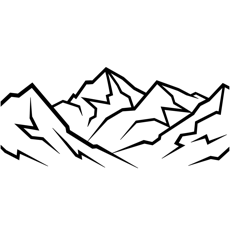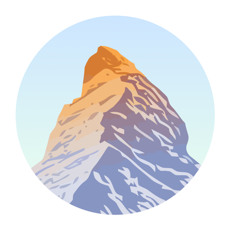Don't underestimate this point. Obviously the weather is a fundamental part of deciding where and when to start a mountain adventure. However, many rely on one, at most two weather forecast providers.
Instead, I advise you to consult as many as possible, to find out if there are any specific entities in the destination area. Very important thing: check the weather until the evening before departure!
There are excursions that develop on easy and tourist routes where a downpour does not worry the hiker. This is because there are various places of shelter (refuges, huts, bivouacs) or because they do not develop in the middle of the woods.
If, on the other hand, the route winds through via ferratas, ledges, isolated roads without refreshment points, high roads, scree, places with a large presence of flora and an abundance of water (rivers, streams, canals), in these cases, even the slightest presence of bad weather could seriously endanger your safety!
Here is the list of the weather that I consult (in this order!):
- ilMeteo: I never got a prediction wrong! I constantly check it from 3 days before the excursion and it manages to give me exceptional reliability!
- ArpaV: is the Arpa weather forecast for the Veneto region. Usually, by locating my excursions in these areas, it is the second reference weather as regards the accuracy of the forecasts and the circumscription of the area to be verified. There is a specific section with in-depth information on the weather in the Dolomites alone. If your excursion does not take place in Veneto, check the various Arpa sections relating to the destination region.
- 3B Meteo: when ilMeteo or ArpaV have a relatively low percentage of reliability (less than 70%) I integrate the analysis with this meteo. By intertwining the three forecasts on the same area, I have a precise vision of what the weather will be on the estimated day.
- Meteo Areonatica Militare: I use it as a litmus test. Usually if the first 2/3 instruments I have just brought back guarantee me a beautiful day, I don't even look at this weather. In case of doubt, however, I check the forecast resulting from the 3 weather with this of the Air Force.
In addition to the weather you will need to check the temperatures of the day / night. A night storm in the days before your outing could have caused the daily temperatures to drop, so you will need to equip yourself properly.
A multi-day excursion will have to take these climate precautions into consideration.
I advise you to leave, if and only if, the weather forecasts guarantee good weather from the morning at least until late afternoon (16-17) for day excursions. For the time relating to multi-day excursions, always check the temperatures in case of bivouac in tents.
Remember that the weather in the mountains changes suddenly: do not get caught unprepared in the event of a summer downpour, even if it is short-lived!








